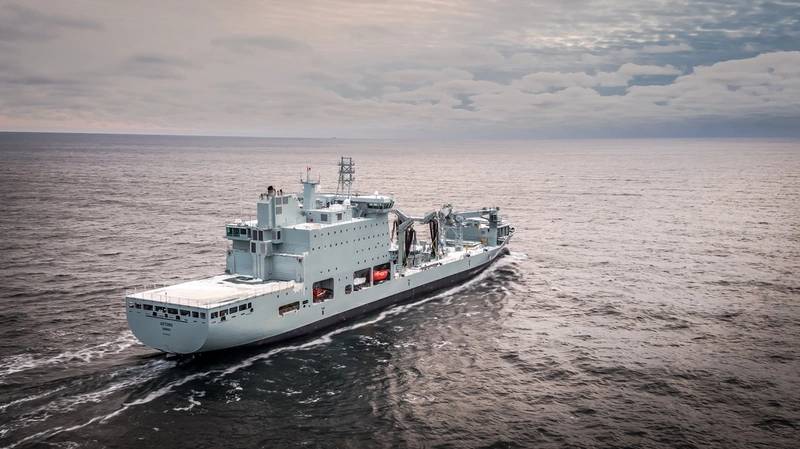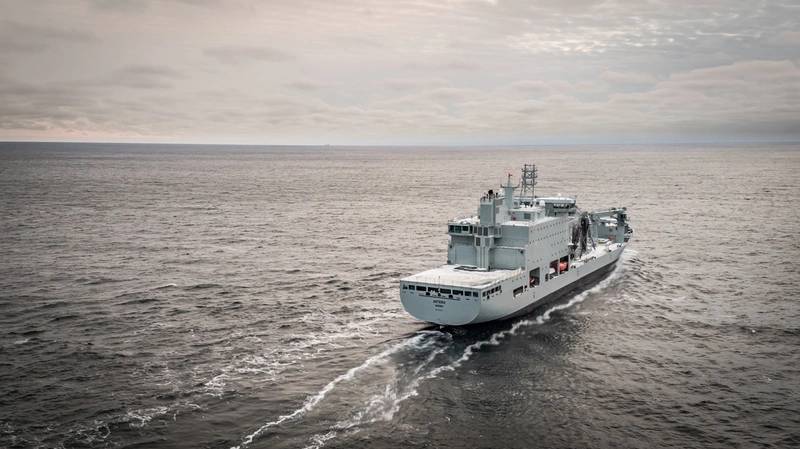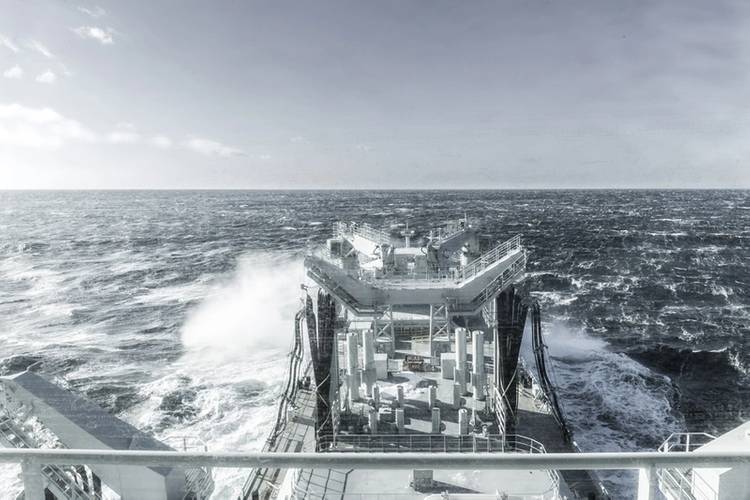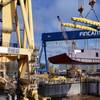Commissioning and sea-trials have been completed for Canada’s first Resolve-Class Naval Support Ship, Asterix, the first new naval support ship to enter service with the Royal Canadian Navy in more than five decades.
The ship, which is also the first large naval platform to be delivered from a Canadian shipyard in over 20 years and the first naval ship to be delivered since the launch of the National Shipbuilding Strategy, was delivered on time, to budget and at an internationally competitive cost, according to Davie Shipbuilding, who converted the vessel using the hull from a modern, ice-strengthened containership.
Asterix departed Québec City on December 23, 2017 en-route to Canadian Forces Base Halifax where she will enter service with the Royal Canadian Navy and be operated by Federal Fleet Services Inc.
Her crew of 36 Canadian merchant sailors together with Davie personnel and industry contractors sailed the 26,000-metric-ton ship on her maiden voyage. During the journey, they completed the testing of her propulsion and navigation systems and state-of-the-art military systems. Upon arrival in Halifax, the ship will welcome aboard members of the Royal Canadian Navy to begin integration training during January 2018 prior to supporting Canadian naval operations from February 2018.
“The delivery of this ship is an innovation showcase for Canadian industry and marks an important new era in Canadian maritime power, for it once again allows the Royal Canadian Navy to independently deploy globally for combat, peacekeeping and humanitarian operations, said Spencer Fraser, CEO of Federal Fleet Services Inc. “To see the Resolve-Class as just another naval ship is too simplistic. It is truly a force multiplier which will provide a globally deployable operating base for the Canadian Forces.”
The Resolve-Class Naval Support Ship was designed by Rolls Royce to support military operations, specifically for its primary Replenishment-At-Sea functionality but also in terms of systems redundancy, damage control, ammunition storage and other systems onboard.
During the conversion, the ship was stripped down to its keel and rebuilt in a modular fashion, installing the same key Canadian military systems that will be installed on Canada’s future naval fleet such as OSI of Vancouver’s Integrated Tactical and Navigation System, L3 MAPPS of Montreal’s Integrated Platform Management System and Hepburn of Toronto’s Replenishment-At-Sea Systems.
Other features include an extensive intermodal handling area that is accessible at sea (a first within NATO), Canada’s first at sea hospital facility (with a full operating theatre) and an advanced aviation capability which is able to land all of the RCAF’s helicopters, including Chinooks.
Like the Joint Support Ship, Asterix is capable of being fitted with a range of active and passive self-defense systems, including three Raytheon Phalanx 20mm Close-In Weapon Systems.
“This is a proving point for Davie,” said Alex Vicefield, Chairman of Davie Shipbuilding. “When we began this program, we looked at what DND had been planning with the Joint Support Ships since 2005 and we quickly realized that the 26-year old German design could be improved upon. For example, having only two replenishment-at-sea stations would mean that it does not fully meet the latest NATO requirements, which crucially calls for four stations. So, we set out to build an innovative, modern design of a naval support ship with the latest, state-of-the-art systems that would be fully compliant to meet Canada’s international and NATO commitments yet also provide a purpose-built platform for responding to humanitarian crises. We wanted to deliver a ship which would rival or exceed the best of the world’s naval support ships. Working closely with our partners in the RCN, the Canadian government and Canadian industry from coast-to coast, we can state categorically that we achieved our goals today.”
The
Resolve-Class Naval Support ship took 24 months to deliver and employed more than 1,000 Canadian shipbuilders at Davie and provided contracts to 918 Canadian suppliers across the country.
The construction of Asterix was entirely privately financed; whereby for the first time in modern Canadian procurement history, all the technical and financial risk was borne by the companies involved – Davie and Federal Fleet Services.
The ship will remain under the ownership of Federal Fleet Services, flying the company’s House Ensign, and be operated by a mixed crew of Canadian merchant seafarers and Royal Canadian Navy personnel for at least the next 10 years of the vessel’s 40-year service life. Canada has the option to purchase the vessel (valued at $659 million) at any time during or upon termination of the lease.






















